If you’re ready to remake your cooking space and want to incorporate luxury stone, the right marble kitchen design ideas can deliver high visual impact.
When you begin planning a kitchen remodel, the surface choices you make will determine both aesthetic and durability outcomes. Selecting a marble kitchen countertop with a bold veining pattern can shift the room from ordinary to exceptional. Using a marble waterfall island design or a book-matched marble backsplash kitchen allows the stone itself to become the focal point rather than just a supporting element. While marble requires more maintenance than some alternatives, the investment pays off in style when the slab is specified and installed correctly.
The following ten concepts show how homeowners and designers are using marble kitchen design ideas to build spaces that feel substantial yet welcoming. Each example includes details you can apply directly when planning your remodel.
1. Carrara marble kitchen countertops combined with white cabinetry
A Carrara marble kitchen countertop never feels outdated. The fine grey veining and cool undertone make it perfect for pairing with white Shaker cabinets or neutral beige paint. Carrara marble kitchen countertops remain one of the most requested materials in residential design because they adapt easily to both traditional and modern layouts. For small spaces, a honed finish softens reflections and hides everyday wear.
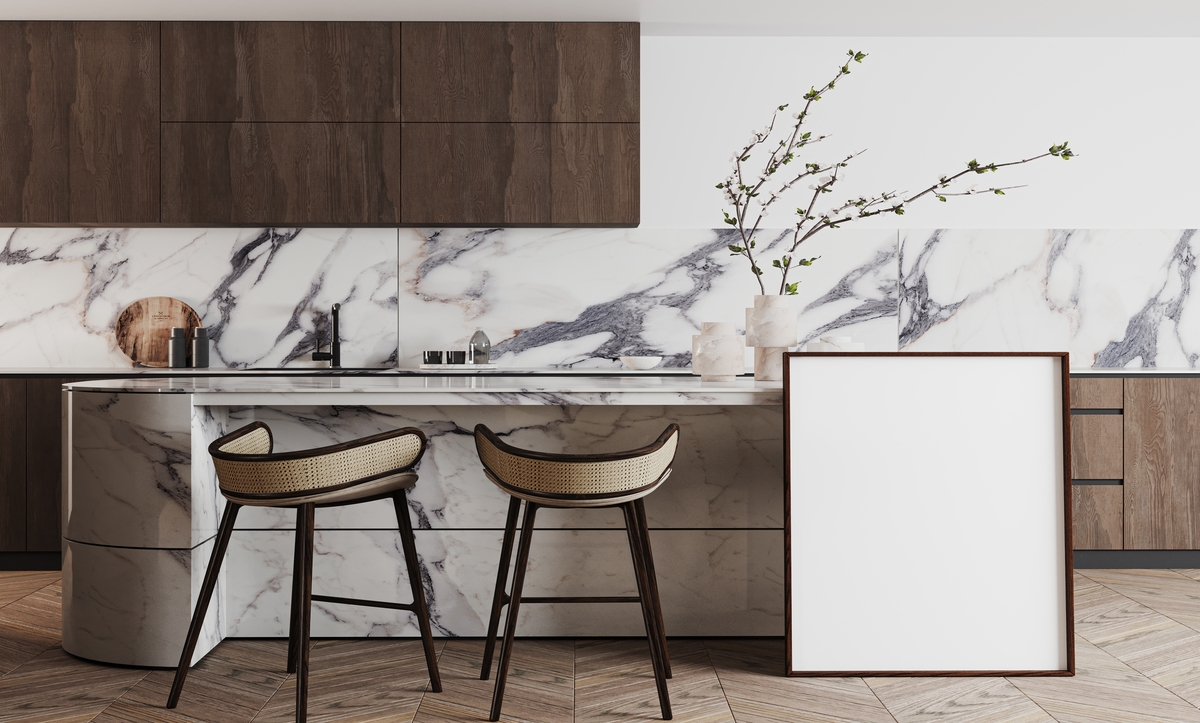
2. Calacatta Gold waterfall island as the centerpiece
A Calacatta Gold waterfall island brings immediate presence to a kitchen. Its thick grey and gold veins flow seamlessly from the surface down each side, creating a sculptural form in the center of the room. The pattern alignment between the countertop and the sides matters — a continuous flow of veining across the marble waterfall island design produces the luxurious effect that makes this layout so sought after.
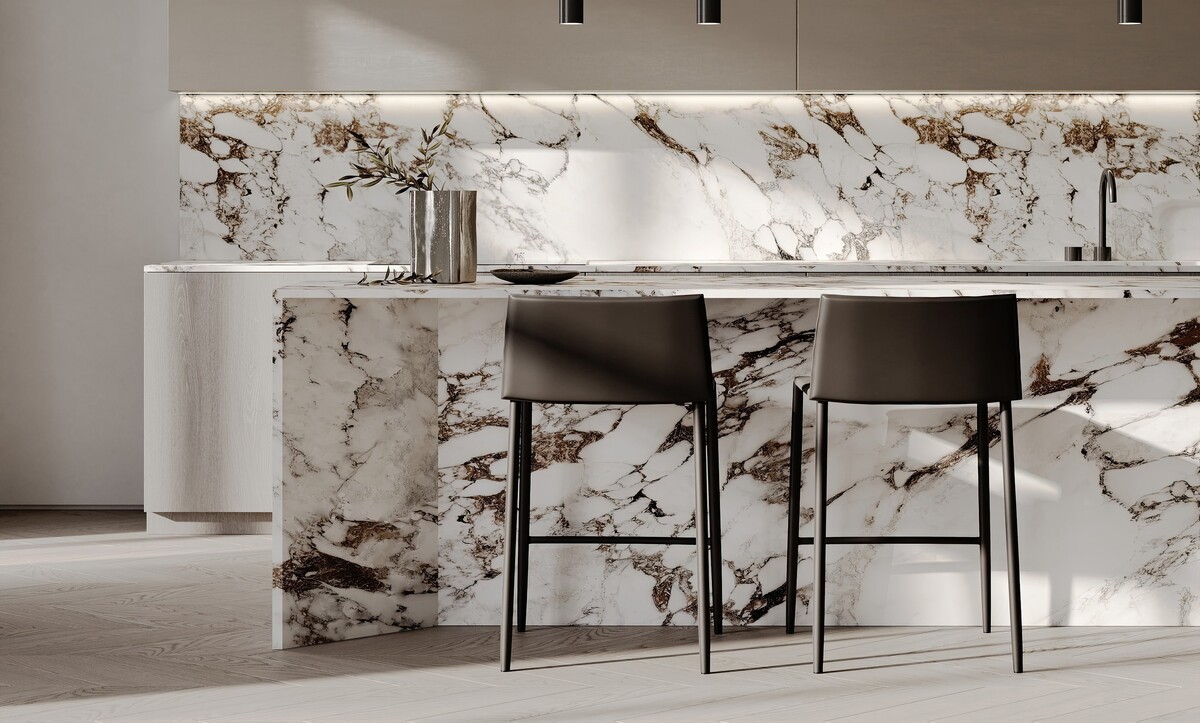
3. Book-matched marble backsplash for visual symmetry
In high-end homes, designers often use a book-matched marble backsplash to create a mirror-image pattern behind the range. This technique involves cutting two slabs from the same block and joining them so the veining meets at the center. When the entire wall is covered with book-matched marble, the kitchen gains the look of natural art without adding clutter. It’s a simple way to turn stone into a statement.
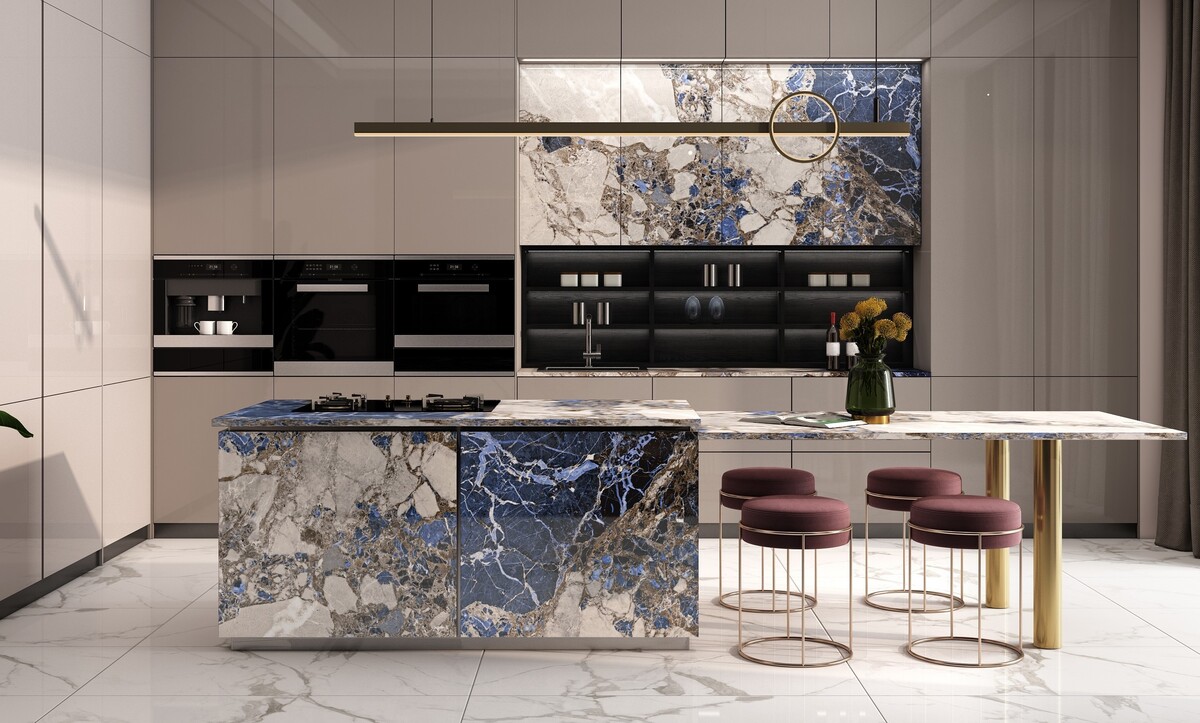
4. Black marble kitchen countertops with crisp white cabinets
Contrast can define an entire space. Pairing black marble kitchen countertops such as Nero Marquina with white cabinetry gives the room structure and clarity. The deep tone of the marble sets off the white surroundings, while brushed steel fixtures complete the picture. A leathered finish on the black marble surface reduces fingerprints and softens light reflection, giving the kitchen a grounded, substantial feel.
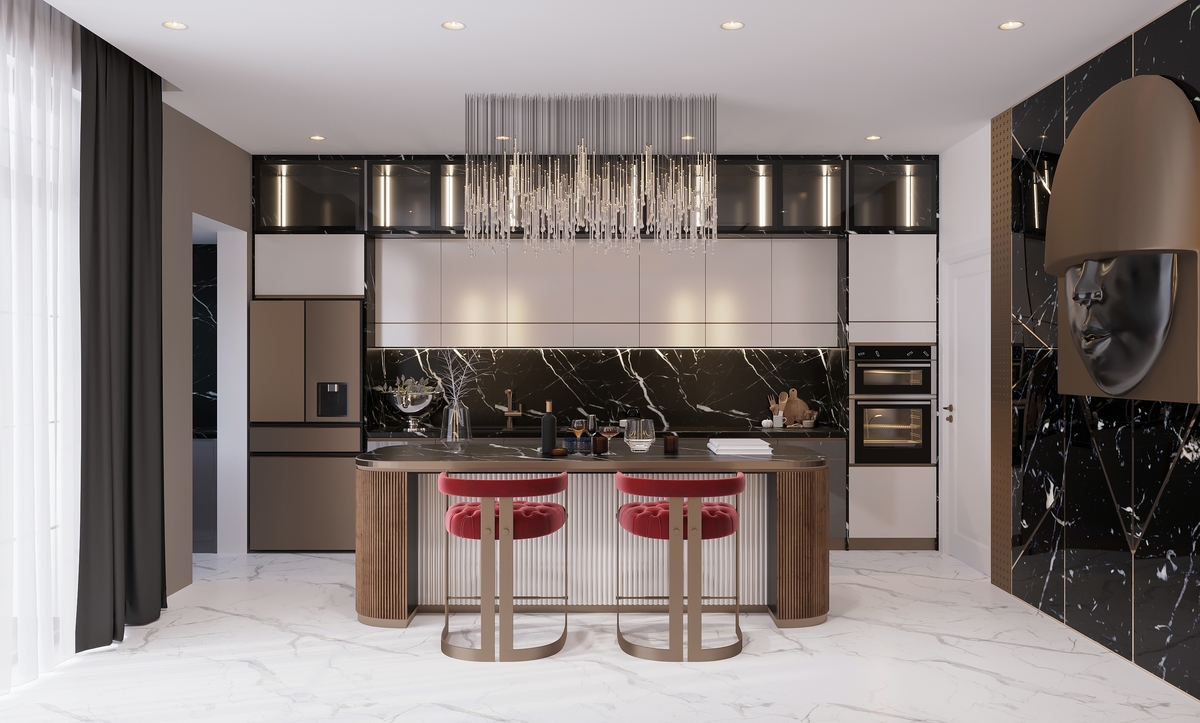
5. Paneled marble island fronts
While waterfall edges dominate many showrooms, paneled marble island fronts create a more architectural look. Each side of the island is clad in marble panels, with veining matched across every seam. This method suits open-plan homes where the kitchen is visible from living areas. It delivers the richness of marble without over-stating it, offering strong geometry and clean vertical lines.
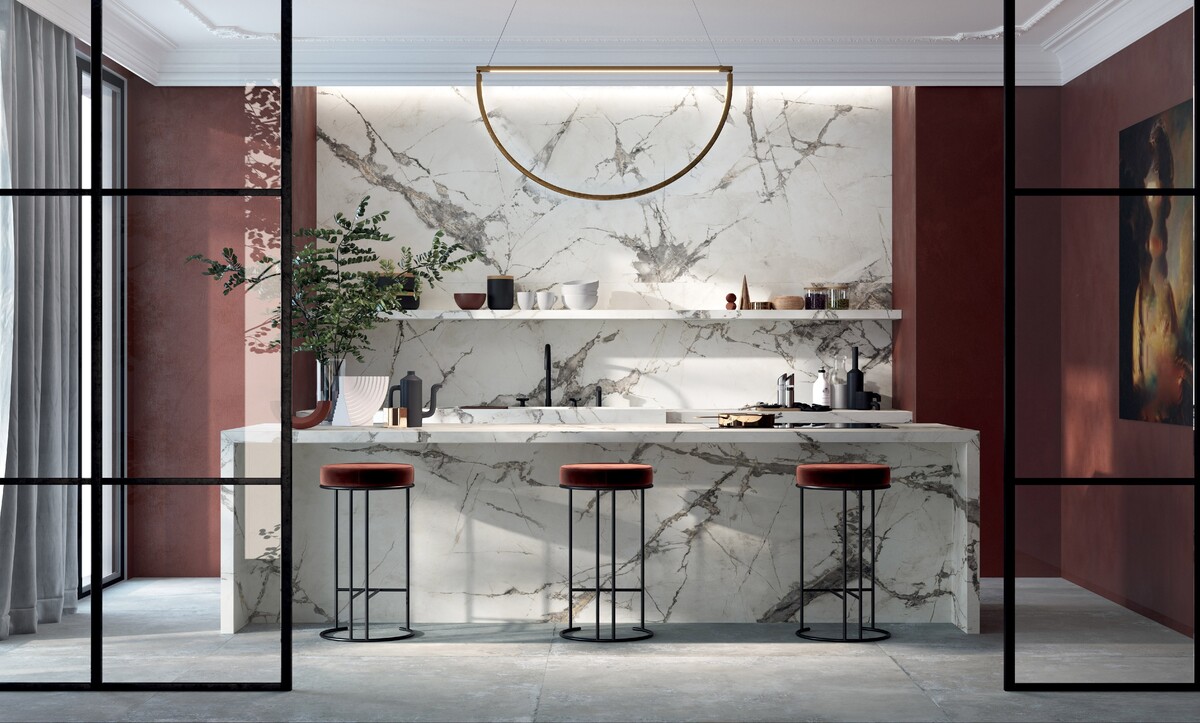
6. Statuario marble slab backsplash with tall upstand
For a balanced, gallery-like kitchen, few choices rival a Statuario marble slab backsplash. The bold grey veins across a pure white field add rhythm to the space. Running the same slab up the wall behind the cooktop and continuing it as a tall upstand along the countertop edge ties the surfaces together naturally. A Statuario marble backsplash kitchen can anchor lighter cabinetry or act as a counterpoint to darker wood finishes.
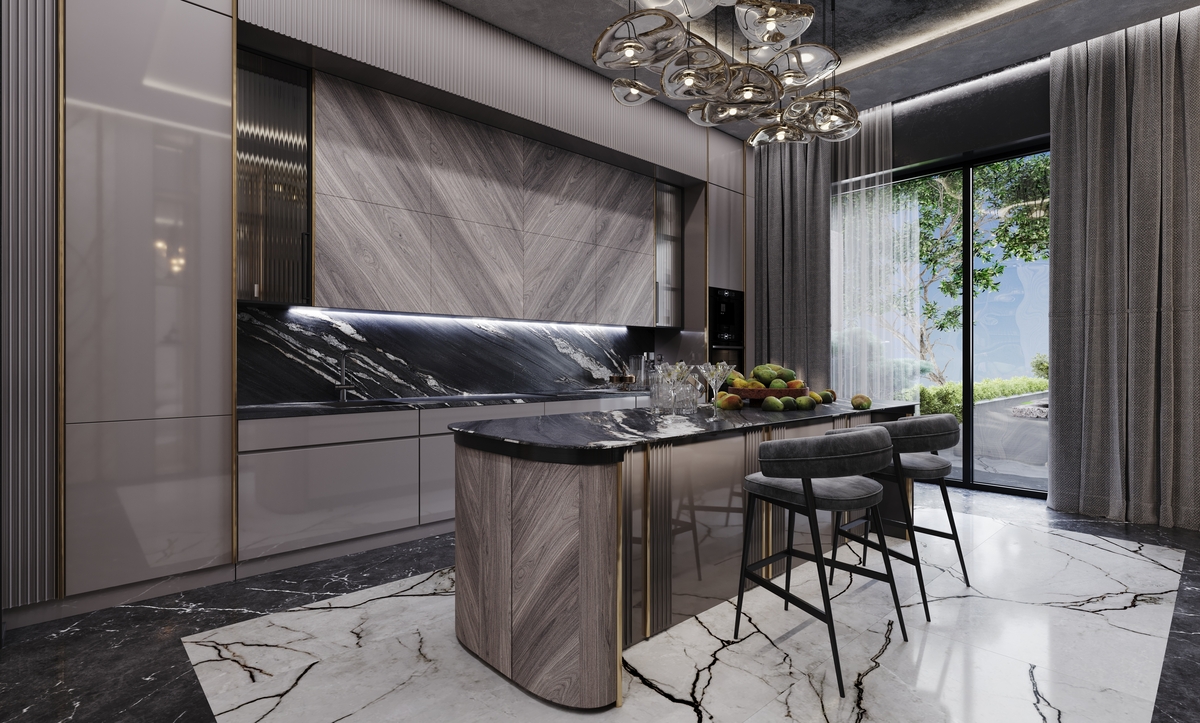
7. Dedicated honed marble pastry counter
Those who bake understand why marble remains the material of choice for pastry work. A honed marble pastry counter stays cool, making it perfect for rolling dough or tempering chocolate. Adding a dedicated section for this purpose, slightly lower than the main worktop, keeps cooking zones organized. Using a matte finish minimizes glare and hides fine scratches from frequent use.

8. Two-tone kitchen with marble island and wood perimeters
Combining warm wood cabinetry with a marble island creates a two-tone kitchen with marble island that feels both natural and sophisticated. Walnut or oak cabinets bring warmth to the space, while the marble introduces clarity and texture. The contrast between organic grain and smooth stone emphasizes each material’s strengths. This direction works especially well in open layouts where visual separation matters.
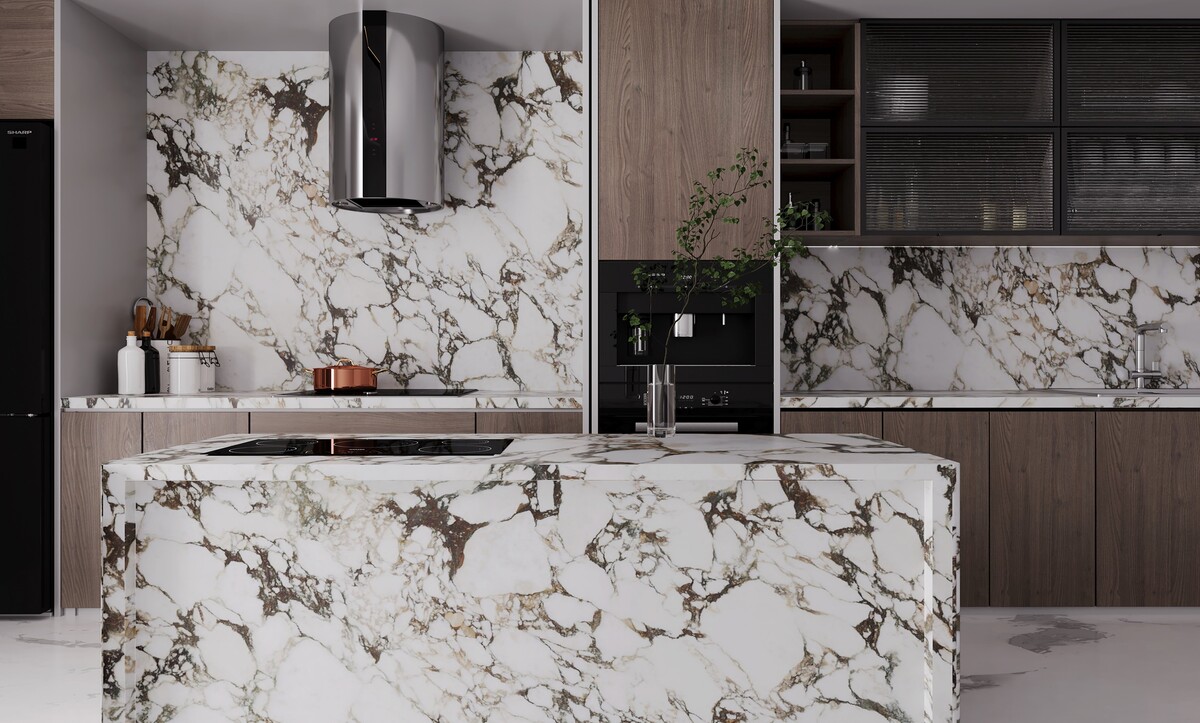
9. Marble-clad range hood or niche
Extending marble beyond counters and backsplashes can completely change how the kitchen reads. Cladding a hood or small niche in stone from the same slab as the backsplash gives a sense of continuity. The visual rhythm of veining that wraps around these details unifies the kitchen’s composition. A marble-clad range hood looks purposeful rather than decorative, turning a functional feature into a strong visual anchor.
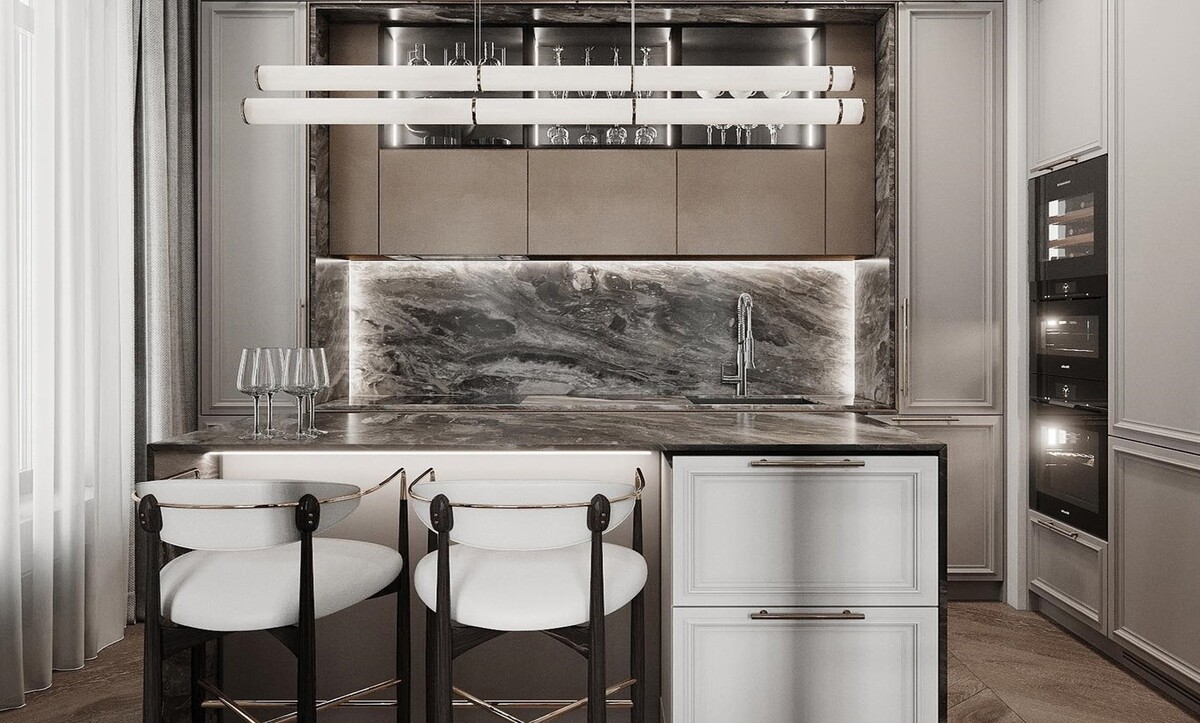
10. Porcelain marble look kitchen countertops for busy areas
Some homeowners prefer to combine natural marble with porcelain marble look kitchen countertops in areas of heavy use. Modern porcelain slabs reproduce the patterns of Calacatta and Statuario marble with remarkable accuracy while offering greater resistance to stains. Using real marble on an island and porcelain marble look surfaces in prep or pantry zones provides the aesthetic you want with less upkeep where it counts.
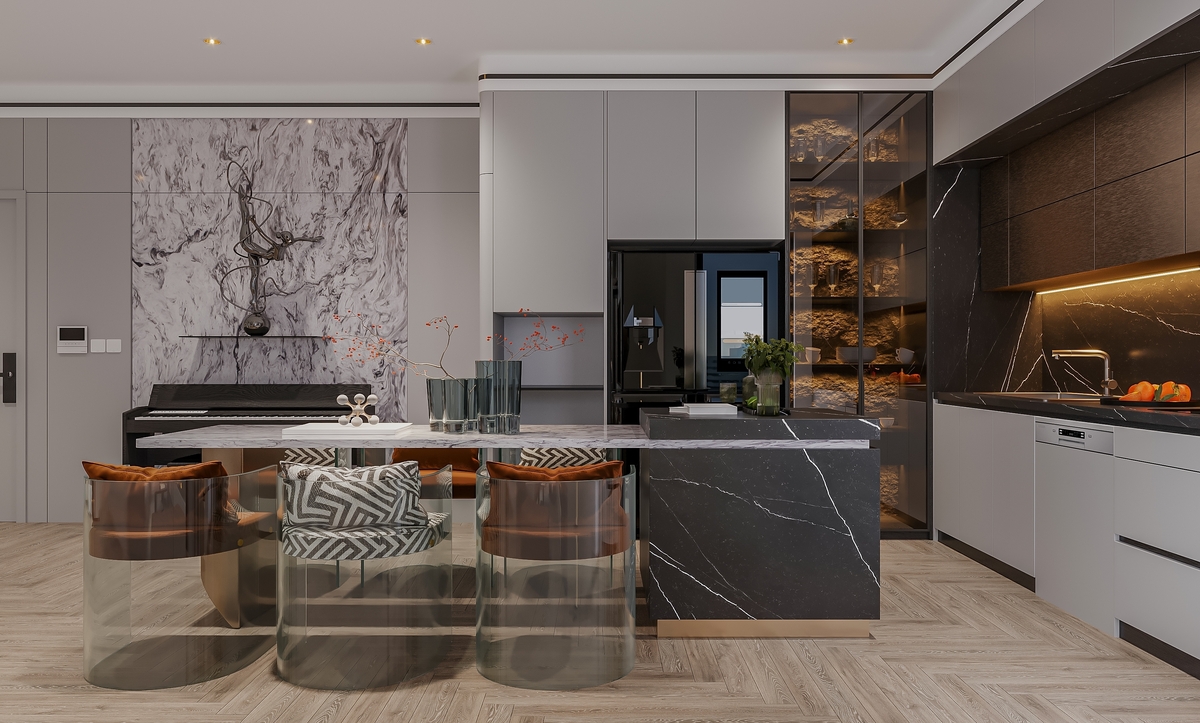
How to plan your marble kitchen
Selecting the right marble is only part of the equation. The outcome depends on correct fabrication, thoughtful lighting, and consistent maintenance.
Finishes: A honed surface delivers a soft matte appearance and hides small marks. Polished marble reflects more light but shows wear faster. Choose based on your cooking habits and the type of mood you want in the space.
Edge profiles: Simple eased or pencil edges look refined and timeless. More intricate profiles can fit traditional designs but add cost.
Maintenance: Marble is porous, so sealing is essential. Clean spills promptly and use mild detergent rather than acidic cleaners. Regular sealing keeps the surface resilient without altering its natural texture.
Vein direction: Always plan how the veining will flow across the kitchen. Photograph your slab before cutting and mark vein paths on templates to ensure alignment on visible joins.
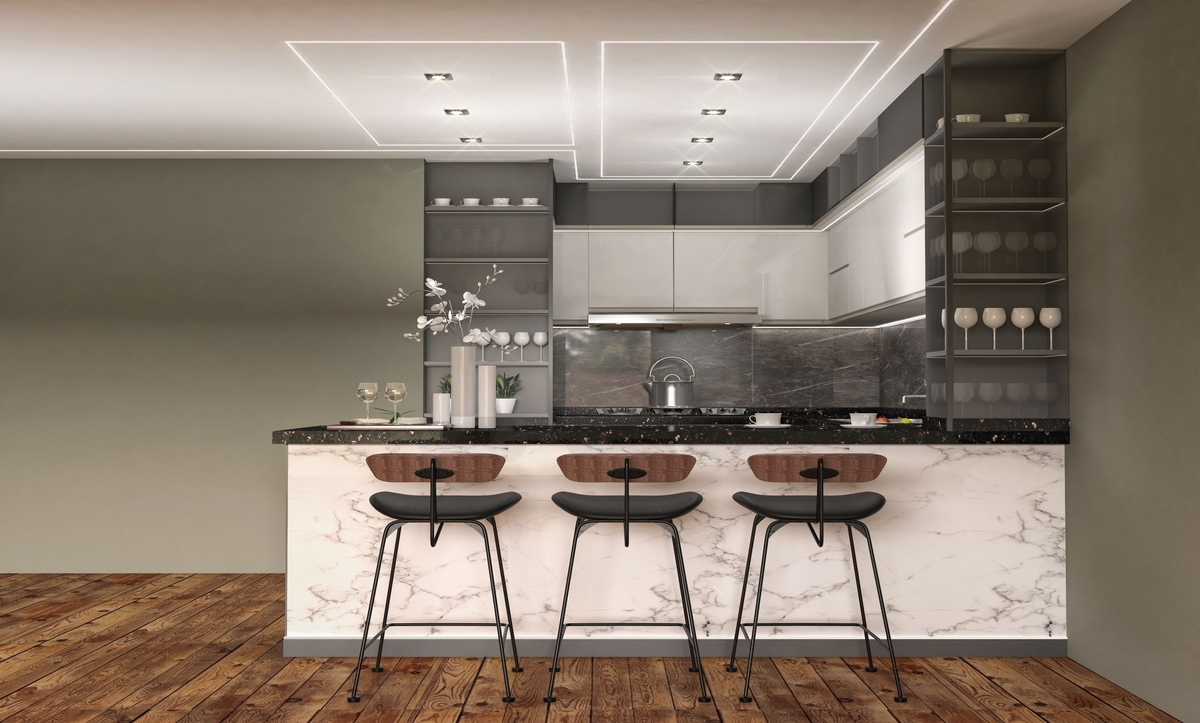
Budget tips:
- Use premium marble on the island and backsplash where it shows most.
- Choose a coordinated stone or composite on less visible runs.
- Keep edge profiles simple to reduce fabrication time.
Frequently Asked Questions
1. Is marble too delicate for a kitchen used every day?
With the right care, no. Sealing the surface regularly and wiping acidic spills promptly preserves the stone’s condition. Many homeowners use marble daily for decades without major damage.
2. Which is better: honed or polished marble?
Honed marble hides fine scratches and softens light reflection, while polished marble offers more shine. For kitchens that see heavy use, honed finishes are generally preferred.
3. What thickness should I choose for countertops?
Most kitchens use either 20 mm or 30 mm slabs. If you want a thicker appearance without added weight, a mitered edge can create the illusion of depth.

4. How does book-matching affect cost and planning?
Book-matching requires two consecutive slabs from the same block, cut and installed so veins mirror each other. It takes precision and additional material, which increases fabrication costs, but the visual payoff is significant.
5. What are the best alternatives to real marble for heavy-traffic zones?
Porcelain and sintered stone options that replicate marble patterns are widely available. They resist etching and staining, making them suitable for secondary areas while keeping the authentic marble on display zones.
Bringing it all together
Each of these marble kitchen designs demonstrates a different way to balance elegance with day-to-day usability. The right combination of material, layout, and finish determines whether a kitchen feels cold or inviting. Carrara softens a room; Calacatta commands attention; Statuario refines structure; Nero grounds the composition. Once you know which one fits your home’s architecture and light, the rest is precision and execution.
Contact Us
Ready to commit to one of these marble kitchen designs?
If you’re ready to translate these ideas into a real project, reach out to Algedra. The firm’s design specialists create bespoke kitchen interiors that merge beauty with lasting visual strength. Whether you want a Calacatta waterfall island, a Statuario backsplash, or an integrated marble pastry zone, Algedra can guide every step from concept to installation.
Contact Algedra today to begin planning your next kitchen remodel — a space built on stone, detail, and experience that endures.